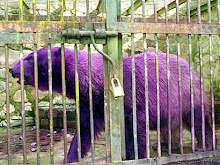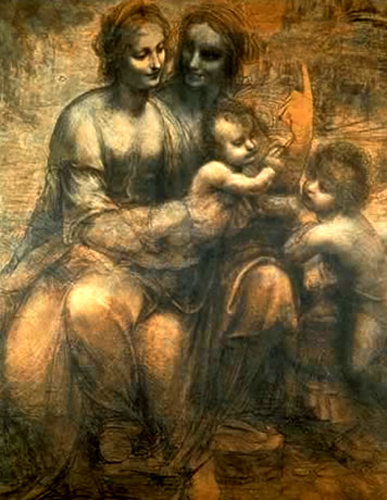Cassius Dio[1] (Greek: Δίων ὁ Κάσσιος) (ca. 155 to 163/164[2]– after 229), known in English as Cassius Dio, Dio Cassius or Cassius Dio Cocceianus[3] was a noted Roman historian and public servant. Dio published a history of Rome in 80 volumes, beginning with the arrival of Aeneas in Italy through the subsequent founding of Rome and then to 229; a period of 983 years. Of the eighty books, written over twenty-two years, many survived into the modern age intact or as fragments, providing modern scholars with a detailed contemporary perspective on Roman history.
Biography:
Cassius Dio was the son of Cassius Apronianus, a Roman Senator. He was born and raised at Nicaea in Bithynia. Byzantine tradition holds that Cassius Dio’s mother was the daughter or sister of Greek historian, orator, and philosopher Dio Chrysostom; this relationship has been disputed. His praenomen is usually held to have been Lucius, but a Macedonian inscription published in 1970 shows it as Cl., presumably Claudius.[4] He was a Roman of Greek heritage and wrote in Greek. Dio always maintained a love for his Greek hometown of Nicaea, calling it 'his home', as opposed to his description of his villa in Italy ('my residence in Italy').
Cassius Dio passed the greater part of his life in public service. He was a senator under Commodus and governor of Smyrna after the death of Septimius Severus, and afterwards suffect consul around 205. He was also proconsul in Africa and Pannonia. Alexander Severus held him in the highest esteem and made him his consul again, even though his caustic nature irritated the Praetorian Guards, who demanded his life. Following his second consulship, being advanced in years, he returned to his native country, where he died.
Roman History:
Dio published a Roman History, in eighty books, after twenty-two years of research and labour. It covers Roman history for a period of 983 years, beginning with the arrival of Aeneas in Italy, and the subsequent founding of Rome, and covers events up to 229AD. Down to the time of Julius Caesar, Cassius Dio gives only a summary of events; after that period, his accounts become more detailed; and from the time of Commodus, he is very circumspect in relating what passed under his own eyes.
Dio published a Roman History, in eighty books, after twenty-two years of research and labour. It covers Roman history for a period of 983 years, beginning with the arrival of Aeneas in Italy, and the subsequent founding of Rome, and covers events up to 229AD. Down to the time of Julius Caesar, Cassius Dio gives only a summary of events; after that period, his accounts become more detailed; and from the time of Commodus, he is very circumspect in relating what passed under his own eyes.
Today, fragments remain of the first 36 books, including considerable portions of both the 35th book (on the war of Lucullus against Mithridates VI of Pontus) and the 36th (on the war with the pirates and the expedition of Pompey against the king of Pontus). The books that follow, to the 54th inclusive, are nearly all complete: they cover the period from 65 BC to 12 BC, or from the eastern campaign of Pompey and the death of Mithridates to the death of Marcus Vipsanius Agrippa. The 55th book has a considerable gap in it. The 56th to the 60th, inclusive, which cover the period from 9 to 54, are complete, and contain the events from the defeat of Varus in Germany to the death of Claudius. Of the next 20 books in the series, there remains only fragments and the meager abridgement of John Xiphilinus, a monk of the XI century. The 80th or last book covers the period from 222 to 229 (the reign of Alexander Severus). The abridgment of Xiphilinus, as now extant, commences with the 35th book and continues to the end of the 80th book. It is a very indifferent performance, and was made by order of the emperor Michael VII Parapinaces.
The fragments of the first 36 books, as now collected, are of four kinds:
Fragmenta Valesiana, such as were dispersed throughout various writers, scholiasts, grammarians, and lexicographers, and were collected by Henri Valois.
Fragmenta Peiresciana, comprising large extracts, found in the section entitled "Of Virtues and Vices", in the great collection or portative library compiled by order of Constantine VII Porphyrogenitus. The manuscript of this belonged to Peiresc.
The fragments of the first 34 books, preserved in the second section of the same work of Constantine's, entitled “Of Embassies.” These are known under the name of
Fragmenta Ursiniana, because the manuscript containing them was found in Sicily by Fulvio Orsini.
Excerpta Vaticana, by Mai, which contain fragments of books 1 to 35, and 61 to 80. To these are added the fragments of an unknown continuator of Dio, which go down to the time of Constantine. Other fragments from Dio belonging chiefly to the first 34 books were found by Mai in two Vatican MSS., which contain a collection made by Maximus Planudes. The annals of Joannes Zonaras also contain numerous extracts from Dio.
Literary style:
Dio attempted to emulate Thucydides in his writing style, but came up short both in arrangement and the presentation of the materials and in the soundness of his viewpoint and accuracy of his reasoning. His style is generally clear, where there appears to be no corruption of the text, although his writing is full of Latinisms. His diligence is unquestionable, and due to his personal circumstances he had the opportunity to either be a first-person observer of or have direct contact with the key figures involved in many of the significant events of the Empire during his own lifetime.
Suscribirse a:
Enviar comentarios (Atom)
Obra

este es uno de mis dibujos
Cofradía que espero que sea grande..... Licenciados Papa Gu
Ideología

Colaboradores
¿ Que nos hace ser como somos?
Cosas que me agradan
- Bersuit
- Blink 182
- Charly García
- Deira
- George Lucas- Star Wars
- Goya- las pinturas negras
- Guns N´Roses
- Klimt- El Beso
- Korn
- La Renga
- Magrite
- Marilyn Manson
- Marques de Sade- Juliette
- Metallica
- Miró
- Nietzsche- Ecce Homo
- Nietzsche- El Crepusculo de los Idolos
- Nietzsche- Más alla del Bien y del Mal
- Nirvana
- Oasis
- Picasso- El guernica
- Placebo
- Rammstein
- Roberto Arlt- Los Siete Locos
- Salvador Dalí- Diario de un Genio
- Sex Pistols
- Sumo
- System of a Down
- The Rolling Stones
- Truman Capote- A Sangre Fría
- Turner
- Van Gogh
- Velvet Revolver
C-Box
Bad Sisters
Sitios de Interés Literario y Sitios dedicados a la arquitectura y los arquitectos
- THEOI GREEK MITHOLOGY
- Liberia Hernandez Argentina
- Frank Minnaret Arquitecto
- Agustina Chavero, escritora
- Letras Libres
- Sitio de Julio Cortazar
- Sociedad Chesterton Argentina
- Casa de Muñecas Ibsen
- James Joyce Centre
- Escritos de Vera talentosa escritora, futuro nobel jejje
- Contextualización de la novela Neuromancer
- Sitio de Hitoshi Abe, Arquitecto Japonés
- Noticias de Arquitectura (Blog)
- Friederich Schinkel, dibujos de planos
- Pagina dedicada a la Arquitectura de la UBA
Oso Polar

Enlaces
- AC DC heavy del bueno
- AC/DC Sitio Oficial
- Agencia de Noticias Tecnologicas y Cientificas de Argentina
- Alberto Morales
- Art For All
- Arte Comtemporaneo de Argentina
- Arte Historia
- Arte Optico
- Arte Universal
- Asociacion en Defensa de los Animales
- Blog de Opiniones sobre Cine e Interés General
- Blog Vegetariano
- Blog: Despierte Ya
- Blog: Tu Ultima Voluntad
- Charif, Gustavo Artista Plastico.
- Computer Graphics Art Society
- Dali Salvador Pagina muy Completa
- Dali, Pagina hecha por Aficionados
- David Bowie que no ye qieapn dudas
- David La Chapelle
- Derrida en Castellano
- Devianart
- Diario Critica para no vivir del culo de las noticias de quien sabe ¿que?
- El almacen del Rock (noticias)
- El Blog del Maestro Peña
- el fotolog de Oliverio
- El Hombre Tiff Blog de Artes Visuales
- Enciclopedia Filosofica On Line
- frases celebres
- Fundación Antoni Tapies
- Galería con Imagenes de Jasper Jhons
- Gaudí y el Modernismo en General desde Arquitectura hasta Musica
- Genio Maligno Libros para bajar
- Gerhard Ritcher, artista alemán
- Giger
- Helmut Newton
- Ilustraciones de Chicas Pin-Up, o en el Anglofono PIn-Up Girls
- Julio Arriaga Pintor
- KORN
- KORN Argentina
- La Radio Metro donde esta el Parquimetro
- Le Modulor Fotolog
- Le Modulor MySpace
- Leedor, Sitio de cultura en General
- Leer Sabato
- Leon Ferrari
- Leornardo Da Vinci Monografía
- Lorenzo Perlonga Ilustrador
- Los Coleccionistas Argentina Trastienda
- Man Ray Catalogo
- Martin Cid escritor encontrado por Causalidad
- mi fotolog, lo cual es una redundancia
- Milo Manara Site
- Miró
- Museo de Andy Wharhol
- Museo Van Gogh
- Myspace Ganeshazine
- Nietzsche en Castellano
- Pagina dedicada a Alemania, cultura, sociedad, etc
- Para Bajar Libros Gratis
- Pin-Up Girls por Howrd David Johnson
- Placebo Otra Pagina +
- Placebo Sitio Oficial
- Poemas del Alma sitio de Poemas y Poetas
- Pure Volume Placebo
- Rammstein una Banda Genial
- Seis Cuerdas
- Sitio de Información y difusión del Anarquismo
- System Of a Down o SOAD
- Tendecia 21 Revista electrónica de ciencia, tecnología, sociedad y cultura
- Tomasso Gravinni
- un blog que hace critica a los discos a los peores eso dice él compruebenlo
- Vanessa Sabeecroft Artista asi como que re loca
- Vito Campanella Sitio Oficial
- Wikipedia, Enciclopedia Libre ayudo a hacerme mas Friki
Cosas Misitcas Esotericas y Extrañas, Religión
Galerías, Museos y Talleres, Artistas, Liberías Artisticas de Argetina, Fabricantes de Pintura
- Capilla del Hombre Guayamín
- Oswaldo Guayasamín- pintor ecuatoriano
- Mi propia Galeria
- The Jewish Museum
- Escher, Sitio oficial
- Museo Roca dedicado a la investigación historica.
- The Times, suplemento de Arte y entretenimiento
- Daniel Santoro el pintor Peronista
- Galaería James Cohan
- Arte 10, decicado al Arte en general
- Asociación de Amigos del Museo Nacional de Bellas Artes
- Instituto Filadelphia
- Estimarte cotizador de Arte
- Ruth Benzacar
- Arte al Día
- Homines Revista de Arte y Cultura
- Revista Sede
- Ramona Revista de Artes Visuales
- Diego Perrotta artista plastico
- Alba Pintura Artista, Fabrica
- Librería Artsitica Thesis
- Casa Museo de Portinari en Portugués
- Francis Picabia
- Tate Gallery, Inglaterra
- Museo Pompidou
- Museo de Orsay
- Museo del Prado
- El Museo Britanico
- Museo Guggenheim
- Taller Juan Herrera Blog
- Juan Herrera Artista Plástico
- Galería Espacio Artemis
Ecología y Defensa Animal, Derechos Humanos
Pintando
















































No hay comentarios:
Publicar un comentario